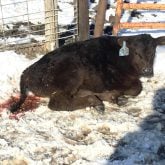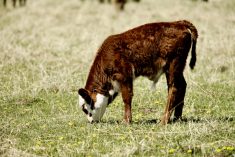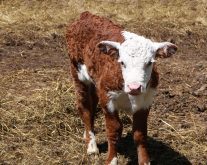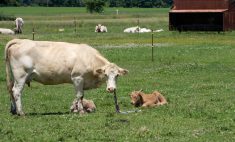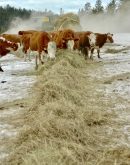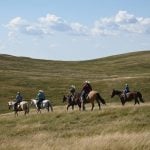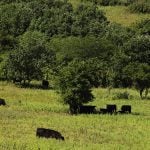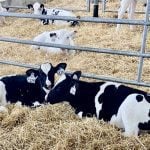Early one morning in January, Alf called upset over what he found when checking his herd of purebred Herefords. Lying in the straw were three aborted fetuses and two other cows appeared to be in the process of aborting third-trimester fetuses. Alf, an excellent stockman but very worried, asked the hard question of what might be happening. Brucellosis (Bang’s disease) stood foremost in his mind. I assured him it wouldn’t be Bangs, but could be a viral disease, infectious bovine rhinotracheitis (IBR), that had been reported as a serious cause of abortion in herds starting in the late 1960s and early 1970s. Vaccinating younger stock with newer modified live IBR vaccines actually caused abortions when they came into contact with pregnant cows. Modified live vaccines could not be used in pregnant cattle without the fear of inducing abortion.
Alf had recently bought two Hereford yearling bulls that were in good health from a reputable producer, but from a herd that had experienced a respiratory disease outbreak earlier in the fall. Alf’s family had also recently bought 20 bred Simmental heifers to establish a Simmental-Hereford cross commercial herd. The Simmentals were being kept on another premise about 20 miles away. Two heifers had recently aborted.
Alf had the fresh fetuses laid on a bench in a heated garage when I arrived an hour later. A gross examination of the tissues failed to reveal anything remarkable. I noted that the tissue seemed severely autolyzed (degenerated). I personally delivered the fetuses to the provincial veterinary laboratory a few miles away. Histopathology revealed marked, multifocal liver degeneration, a classic sign of bovine herpes virus infection (BHV-1 or IBR).
Read Also

Building demand together: The impact of Canada’s beef import levy
The beef import levy has become a central tool for ensuring balance in Canada’s beef industry
We were never able to confirm the source of infection. Alf made arrangements to vaccinate all pregnant females with an intranasal IBR vaccine as soon as possible. The intranasal IBR vaccine provided more rapid protection and was advertised for use in pregnant animals. The clinic had recently stocked several thousand doses of Connaughts’ intranasal vaccine in anticipation that dairy and beef herds would begin IBR vaccination.
Fourteen days following vaccination, abortions stopped. The response to intranasal vaccine in this case seemed quite remarkable.
The prevalence of abortions in pregnant cows exposed to “wild-type” IBR or to modified live vaccine has been reported to range up to 40 per cent.
IBR is the most common form of BHV-1 infection, resulting in upper respiratory disease in animals, generally aged over six months. Initially, presenting signs are often relatively mild: reduced appetite, fever, drop in milk, coughing and dullness, with or without serious nasal discharge and tearing. When infections are more severe, coughing may be present for up to three weeks before subsiding. In these cases, mortality can be increased by secondary bacterial infection producing severe pneumonia. Complicated cases develop a marked congested nasal mucosa and the presence of necrotic tissue lining the larynx and oesophagus. IBR may affect young calves and produce a high mortality with encephalitis, enteritis and pneumonia.
– Dr. Ron Clarke is a veterinarian who consults on animal health and disease issues and writes for agricultural and veterinary audiences.




